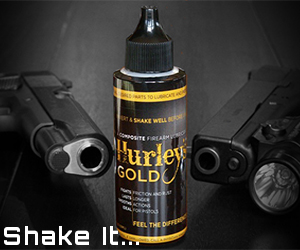I was fortunate to attend a great training class Feb. 27-28 hosted by K R training. The instructor for the class was Claude Werner. He is an IDPA Master level shooter and been carrying a snubby since 1980. He was first a student at Rogers Shooting School later becoming the Chief Instructor there. For those who haven’t heard of the Rogers school, it’s probably the best pure shooting school available to civvies. Rogers Shooting School - Reactive Shooting Training
He is one of only two instructors that I know of that teach a specific class for the snub nosed revolver. He has really put a lot of effort into organizing his years of experience and analysis into a very well structured class.
The first day we started with some lecture. We covered some background material, targets that we were going to be using, and some accuracy standards. Claude noted some characteristics for the Snubby as:
Advantages:
Small & light weight
The failure to fire malfunction drill is simple, pull the trigger again.
The manual of arms is easily taught to no dedicated personnel.
Functions fine with low powered ammo.
Better than autoloaders for pocket carry.
Can shoot through pocket if needed.
Dry fires well.
Disadvantages:
Sights are small.
Long trigger pull
Ammo capacity is low.
Difficult to reload.
Remedial action is complex, usually needed tools, bench, etc…
After the lecture & safety briefing we headed to the range.
Claude told us the drill we were to shoot and then demo’ed the drill for us. That was a great teaching method. Everyone had plenty of time to watch the drill and get the details down for the stance, grip, trigger press etc... We shot the DEA dot targets dry fire first then we loaded up and shot 1 dot with 1 round, spin the cylinder, 2 rounds, spin the cylinder and 2 rounds. ( known as ball & dummy drill) We completed this for 3 dots.
This is a great way to get immediate visual feedback, a very important learning tool. If you yanked the trigger you pulled the shot out of the dot or you saw the whole dot and heard a click
We reloaded using loose ammo in the pocket. It was good to practice this as sometimes loading devices may let go of their rounds in your pocket and you may be forced to reload with loose ammo. Claude emphasized not getting “task fixated” when loading the gun, meaning load one or two rounds look at the target, load 1, look at the target, etc.. until loaded.
We shot some more drills using photo targets, more dots, and finished our shooting with the Nevada CHL test. Everyone passed the test without a problem. We also shot our carry ammo for accuracy at 3 and 5 yards. This was valuable to test where our ammo shot in relation to our sights.
We finished up the day with lecture and discussion about different grips, holsters, sight modifications, carry ammo thoughts, lasers, maintenance, and dry fire routines.
The class was solidly rooted in performing the basics and progressed in a structured way throughout the day. Starting with two handed shooting aimed fire and progressing to presentation from the holster.
He is one of only two instructors that I know of that teach a specific class for the snub nosed revolver. He has really put a lot of effort into organizing his years of experience and analysis into a very well structured class.
The first day we started with some lecture. We covered some background material, targets that we were going to be using, and some accuracy standards. Claude noted some characteristics for the Snubby as:
Advantages:
Small & light weight
The failure to fire malfunction drill is simple, pull the trigger again.
The manual of arms is easily taught to no dedicated personnel.
Functions fine with low powered ammo.
Better than autoloaders for pocket carry.
Can shoot through pocket if needed.
Dry fires well.
Disadvantages:
Sights are small.
Long trigger pull
Ammo capacity is low.
Difficult to reload.
Remedial action is complex, usually needed tools, bench, etc…
After the lecture & safety briefing we headed to the range.
Claude told us the drill we were to shoot and then demo’ed the drill for us. That was a great teaching method. Everyone had plenty of time to watch the drill and get the details down for the stance, grip, trigger press etc... We shot the DEA dot targets dry fire first then we loaded up and shot 1 dot with 1 round, spin the cylinder, 2 rounds, spin the cylinder and 2 rounds. ( known as ball & dummy drill) We completed this for 3 dots.
This is a great way to get immediate visual feedback, a very important learning tool. If you yanked the trigger you pulled the shot out of the dot or you saw the whole dot and heard a click
We reloaded using loose ammo in the pocket. It was good to practice this as sometimes loading devices may let go of their rounds in your pocket and you may be forced to reload with loose ammo. Claude emphasized not getting “task fixated” when loading the gun, meaning load one or two rounds look at the target, load 1, look at the target, etc.. until loaded.
We shot some more drills using photo targets, more dots, and finished our shooting with the Nevada CHL test. Everyone passed the test without a problem. We also shot our carry ammo for accuracy at 3 and 5 yards. This was valuable to test where our ammo shot in relation to our sights.
We finished up the day with lecture and discussion about different grips, holsters, sight modifications, carry ammo thoughts, lasers, maintenance, and dry fire routines.
The class was solidly rooted in performing the basics and progressed in a structured way throughout the day. Starting with two handed shooting aimed fire and progressing to presentation from the holster.






